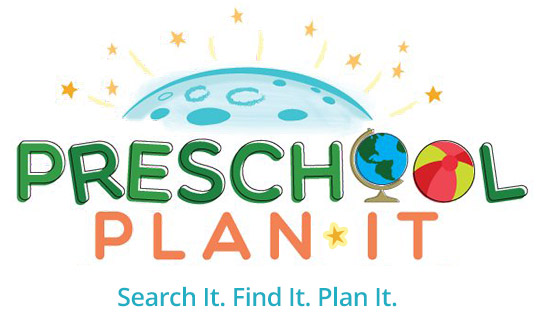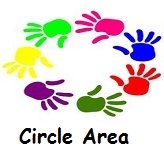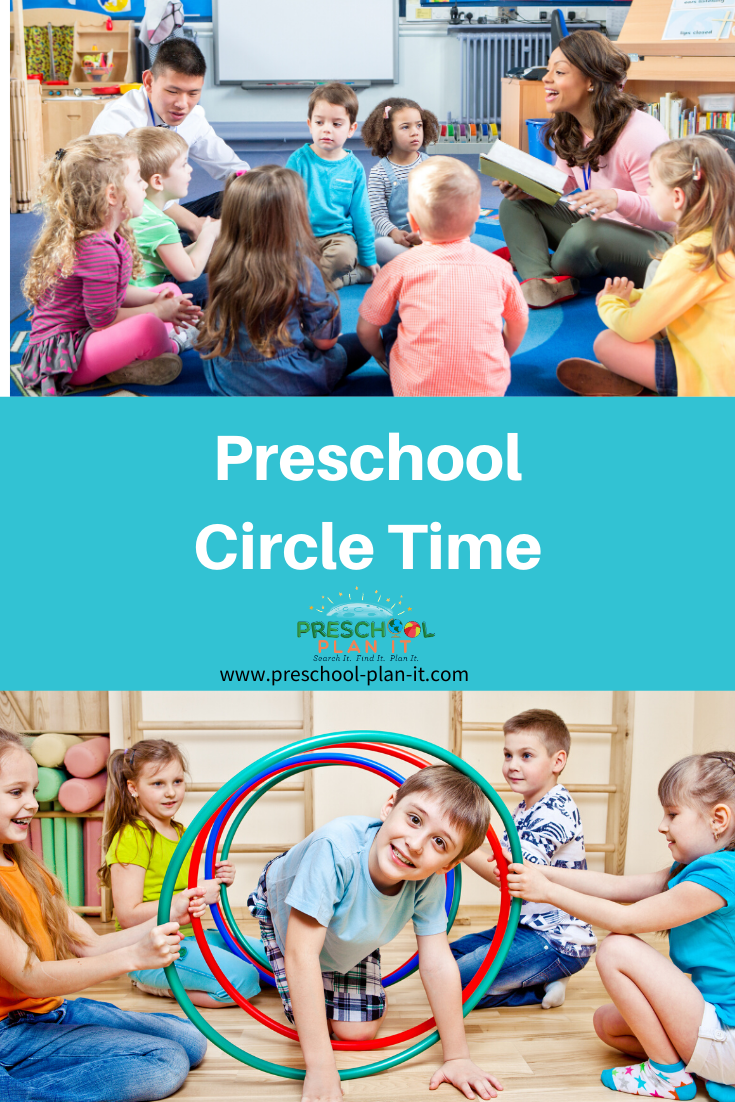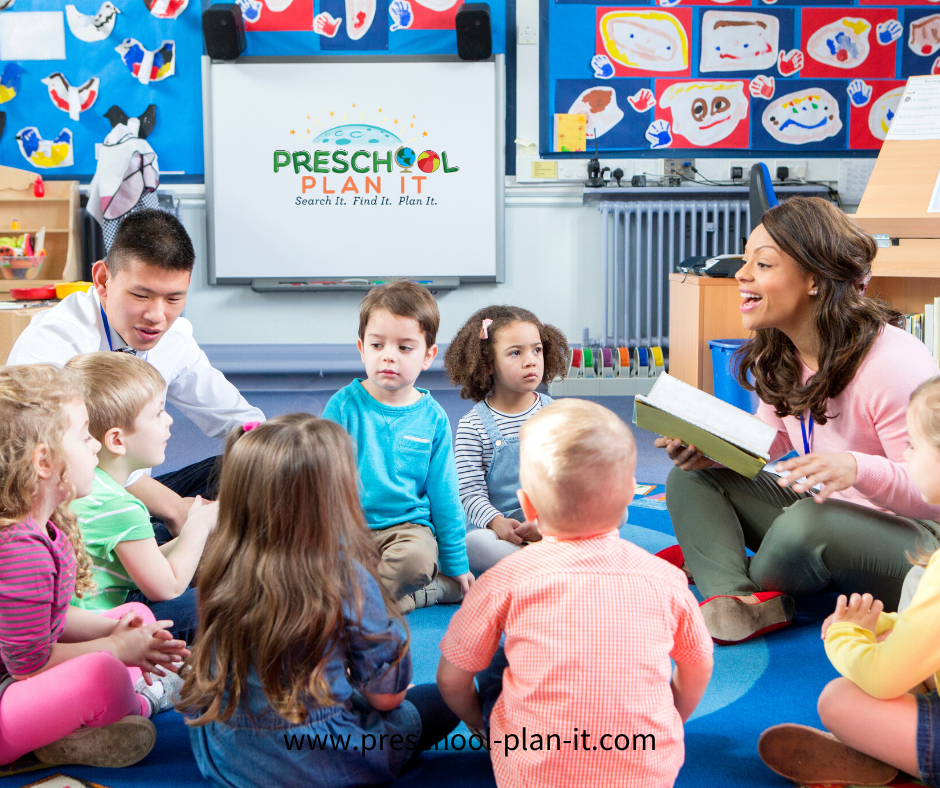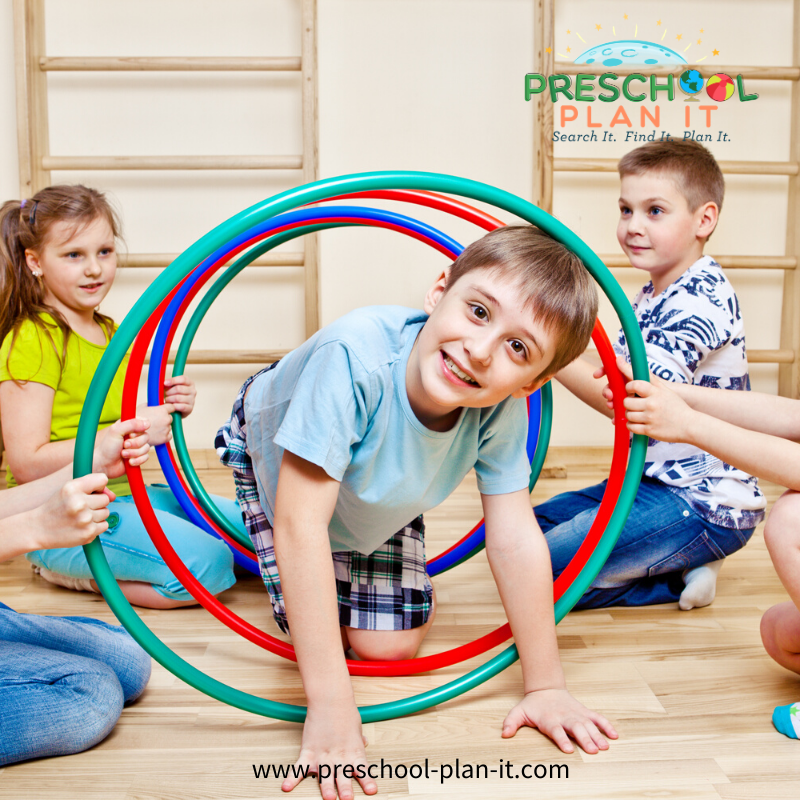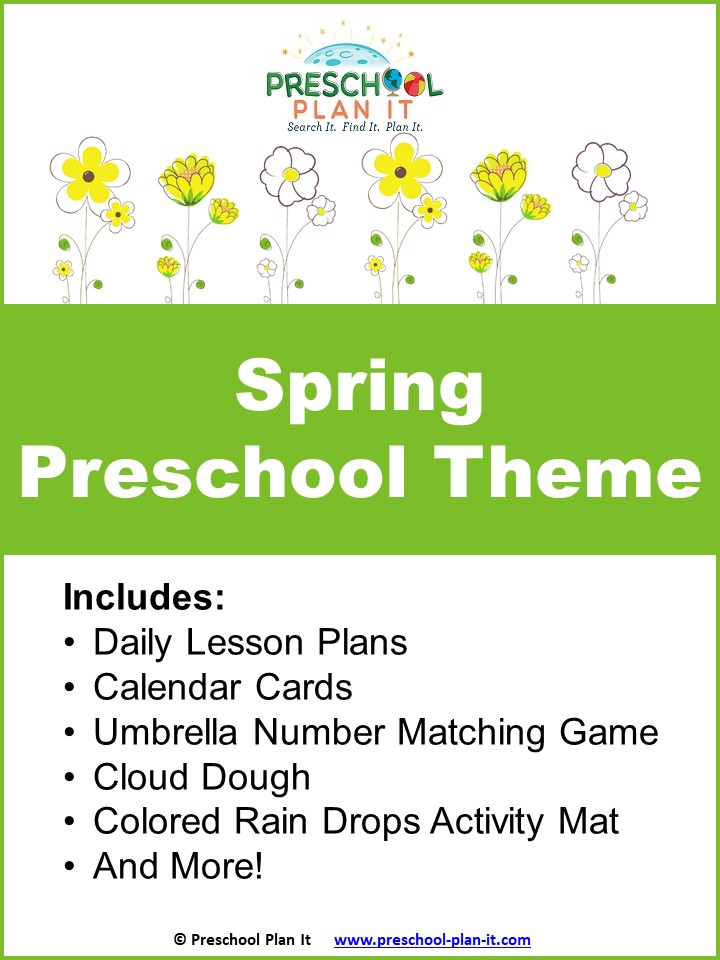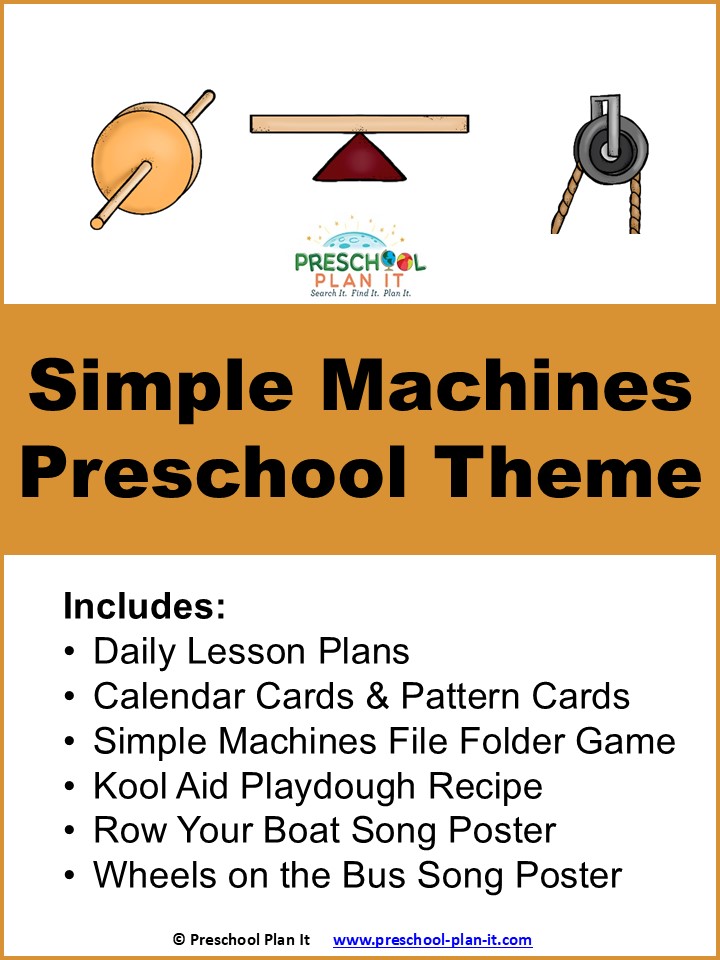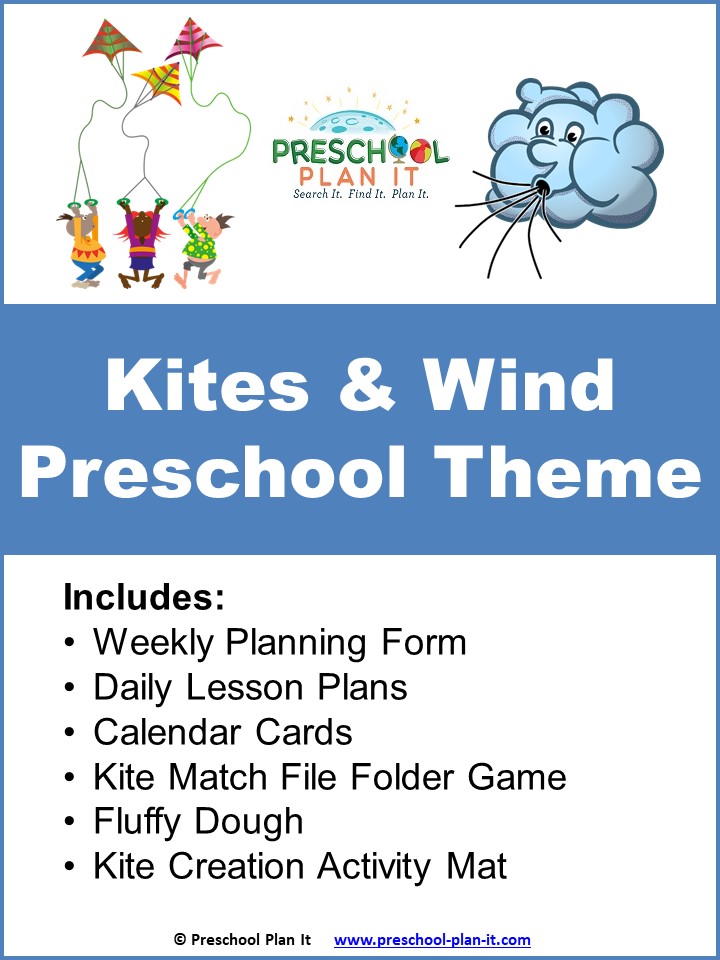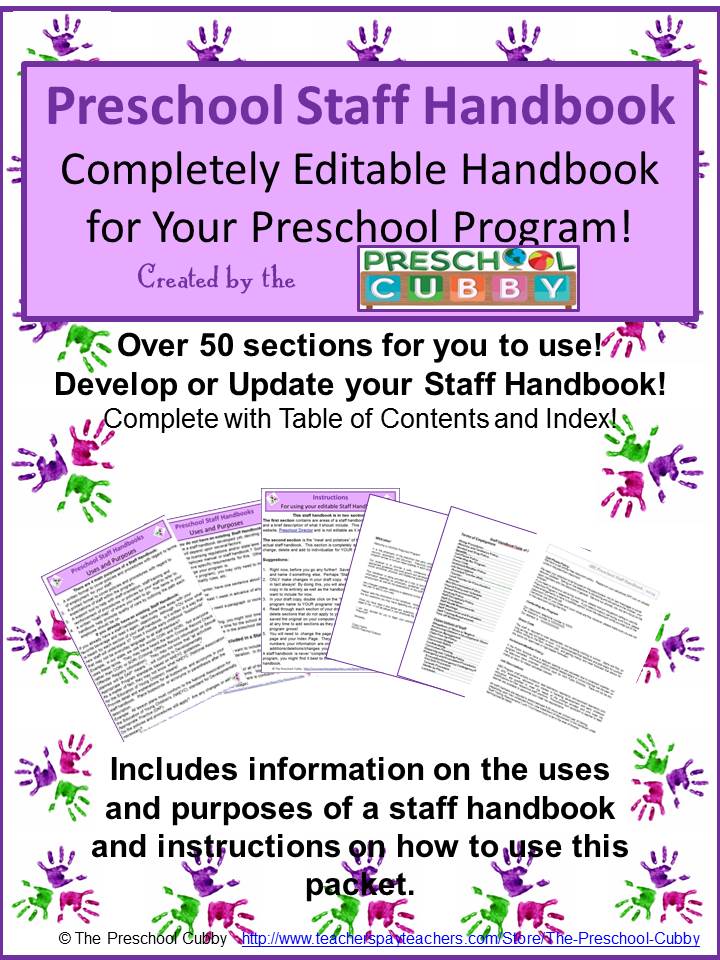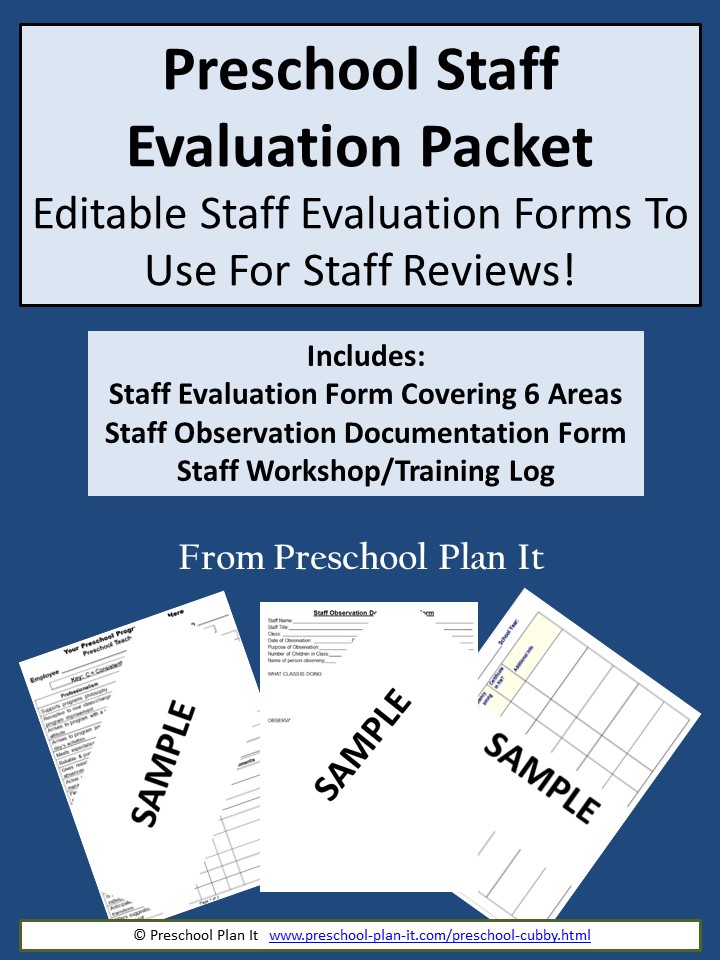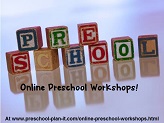- Theme Packs
- Themes
-
Preschool Planning
- Preschool Teachers

Your Circle Time Area IS an Interest Learning Center!
What? My Circle Time Area is an Interest Learning Center? You bet!
Circle Time is a traditional daily event or activity in most preschool classrooms. The activities may include stories, calendar and weather discussion, attendance, songs, exploring materials and more.
It should be an interactive area where children learn together as a part of a community. Your Circle Time Area needs to be set up in ways that reflect the needs and abilities of your children.
Want to learn about the other interest centers? Check out our Preschool Interest Learning Centers page.
What Do Preschoolers Learn In The Circle Time Area?Circle time provides the opportunity for preschoolers to develop in all areas of growth and development!
Cognitive Development
Preschoolers' ability to think and reason are encouraged here by
- reading stories followed up with “I wonder why” and “What would happen if” type questions
- introducing materials that the opportunity for children to reason, guess and discuss how to use them.
- introducing games and materials that increase their knowledge of concepts such as colors, shapes and measurement including length, height, weight, spatial areas
Emotional Development
Preschoolers become part of a community or preschool family where their thoughts, ideas and feelings are encouraged and valued. Circle time allows children to share their thoughts about activities, topics, themes and general discussions such as what they did this weekend. It is a great environment for the children to get to know each other and and bond as a group!
Language Development
Circle time is all about language and discussion! Appropriately, it includes discussions WITH children and not the teacher talking AT children throughout this time. Songs, stories and discussion encourage the use of letter sounds, recognizing letters and rhyming words thereby helping develop their language.
Physical Development
Large/Gross Motor Development:
Many movement activities, songs, games and activities during this time preschoolers them move and develop, as well as learn to control, the large muscles in their bodies. They also develop this by learning where their own physical space begins on a mat, carpet square, etc. and where it ends. They also begin to learn to respect each the space of others.
Small/Fine Motor Development:
The use of props such as manipulatives (dinosaur counters for graphing as an example), flannel pieces, passing a seashell around, etc. helps the children develop their small muscles.
Social Development
Discussions during Circle Time help children practice taking turns in conversation (let someone finish talking before you talk, etc.). They learn how to handle social issues through problem solving during role play, discussions, puppet shows or stories about solving problems with friends. Circle time also helps children to increase their attention span over time.
How Should You Prepare the Circle Time Area?
Circle Time is an area where intentional and thoughtful planning and preparation are required. A teacher should not just grab a book off the shelf that is theme or concept related, or sing the same 2 songs all year long.
As discussed in the previous section, children have the opportunity to learn so much in all areas of development at Circle Time: Do not waste this time by not planning!
What should you do to plan?
- When writing up your plans for the week, write down the theme or concept that you are focusing on, allowing you to consider specific circle time activities to support each.
- List the items that you do daily (Hello song, weather, Show and Tell, etc). You need to plan your circle time so that it is NOT too long. Adding activities that keep children engaged in learning may mean that you pass up your letter introduction one day. A Show and Tell Day is already a long circle time, do not add new activities that add time on that day.
- Choose activities that allow your children to be involved in the activities such as having props or flannel board pieces to use when singing a song or for some stories.
- Choose your stories intentionally. Know the story ahead of time—read each book twice before presenting it to children. Doing so will ensure:
- The story is developmentally appropriate for your age group.
- The book is appropriate for a group story (i.e. Golden Books are great, but very long. They are best for one on one reading or home reading, not to a group).
- You know the story line well enough that you can change your voice (inflection or tone) for the different characters and/or parts of the story.
- Pre-reading stories will many times trigger ideas for you such as “Oh! I have a frog puppet that would be GREAT as a story reading helper!” Or, you may remember a box of manipulatives or toys you have in the closet that would be great to introduce the story with!
- Plan activities so that they are balanced with regard to active and passive. It is important to break up longer activities (those that last more than 5 minutes) to prevent your children from losing focus and interest and therefore becoming distracted and becoming disruptive.
Example, after reading a story, stand up and do the Hokey Pokey or some other movement activity. Then sit back down and discuss the story or give out props to retell the story.
- Before any Circle Time, be certain that the children have had some active activity time or you will most certainly lose the focus and attention of at least half your group within 5 minutes.
Here is why: Most circle times are at the very beginning of the day. The children sit in their cars or on the bus to school. They then sit at tables or on the floor for “arrival time activities” such as puzzles or other table activities.
DO NOT expect them to then come to Circle Time Area and remain focused and sitting! They have already been sitting for 30 minutes or more!!!
- Most importantly, be prepared! Plan ahead. Have the items you will need ready the day before. If you have to go looking for an item, you’ve lost your children’s attention.
Where Should You Set Up the Circle Time Area?
This will all depend upon how much room you have in your classroom. Most preschools have a dedicated area or corner for Circle Time. That area is then multi-tasked and used for other activities during interest center time such as a place for floor puzzles; a place to have math or science bins available during center time.
The three main things to consider are:
- Is there enough wall space for charts/graphing, weather chart, etc.?
- Is there an outlet nearby for use with your CD player or other items you may need (we’ve used an apple juicer, popcorn popper, etc.)?
- Is there enough room for all of your children to sit in an actual circle together comfortably (on mats or carpet squares)?
For more information on how to physically set up Interest Centers, go to my Classroom Design article.
Materials for Your Circle Time Area
The materials and items to have on-hand will be determined from week to week based on your planned activities for Circle Time.
There are, however, some basics that you will want to have available:
(I LOVE Amazon, and some of the links below will take you to the Amazon website. If you do choose to purchase yours through Amazon, they do send me a few cents--which supports my coffee habit! )
CD Player
Music is, or should be, a regular part of your Circle Time Area activities. You will need a portable CD player (i know--it's old school but works for me!) and access to an electrical outlet or perhaps an MP3 Player!
A Wide Variety of CDs!
Always add to your music collection! Ask for donations from parents! Check your local library or teacher store!
Some of my favorite CDs for the Circle Time Area are Dr. Jean & Friends, Dr. Jean Sings Silly Songs (both by Dr. Jean Feldman), ANY Greg & Steve music collections (especially Kids In Action and Kids in Motion) and the Bean Bag Activities & Coordination Skills
Carpet squares or mats.
Carpet Squares are available in larger and smaller sizes.
You may be able to have them donated from carpet or big box stores (be sure to send a thank you note and give them a mention in your monthly newsletter and then send a copy of the newsletter to them. Free advertising for them and free carpet squares for you! Win-Win!)
Colorful mats are also a fun way to set up circle time!
Wall space
You will need space for a chart for graphs, taste tests, etc. Don't put too much on the wall. It is overstimulating and your children will NOT know where to focus (even if you are pointing at what you want them to look at). Less is more!
A flannel or felt board is a must! Most stories or concepts you work on at Circle Time can be interactive for the children by adding flannel pieces!
Recommendation
One resource I simply could not do with out is the book The Creative Curriculum for Preschool by Diane Trister Dodge.
I believe every classroom should have one! If your program does not have a copy, check your local library or bookstore. It is a wealth of information on interest centers and could not be more developmentally appropriate!
Themed Activities
Circle Time should NOT JUST BE CALENDAR AND WEATHER TIME! As mentioned earlier on this page, there are so many activities you can plan based on concepts you are working on or the theme of the week or month! Check out my Preschool Theme Pages for ideas and activities for Circle Time!
The 6 Do-s and Don'ts of Circle Time
The purpose of this page is the discussion of the activities that could and should take place in your Circle Time Area as well as how to set up this area.
However, there is so much more we could talk about! Think about these two statements:
- There is so much that can happen to help encourage the growth and development of your children at your Circle Time Area!
- There is so much that can happen to discourage the growth and development of your children at your Circle Time Area.
Be sure to read my 6 Do-s and Don'ts of Circle Time article to learn more!
Circle Time Area Summary
Your Circle Time Area, when planned well, is a prime opportunity for your children to grow and develop in all areas through the learning, sharing and discussions that are planned.
Click here to read about other Preschool Interest Centers in your classroom!
Go to Preschool Plan It's Home Page
Hey there! Welcome to Preschool Plan It! I’m Cheryl, a preschool teacher of over 20 years.
I KNOW, I know, you spend hours of time developing your preschool themes, activities and preschool lesson plans each week. You are commited to planning preschool themes and activities that are engaging hands-on, interactive, fun AND meet the goal of supporting each child’s level of growth and development.
I am commited to providing you, the preschool teacher, with everything you need to develop preschool lesson plans and preschool activities for your classroom all in one place!
READ MORE
Join My Free Preschool Teacher Tips Newsletter
You’ll receive a weekly email with planning tips and teaching ideas.
You'll also receive (on the 1st of each month) a free theme starter pack with some printables and activity ideas to get you started planning a theme!Join Now and Get Your First Theme Right Away!
© Copyright 2010-2025 Preschool-Plan-It.com | All Rights Reserved | Privacy Policy & Disclaimer
- Preschool Teachers
